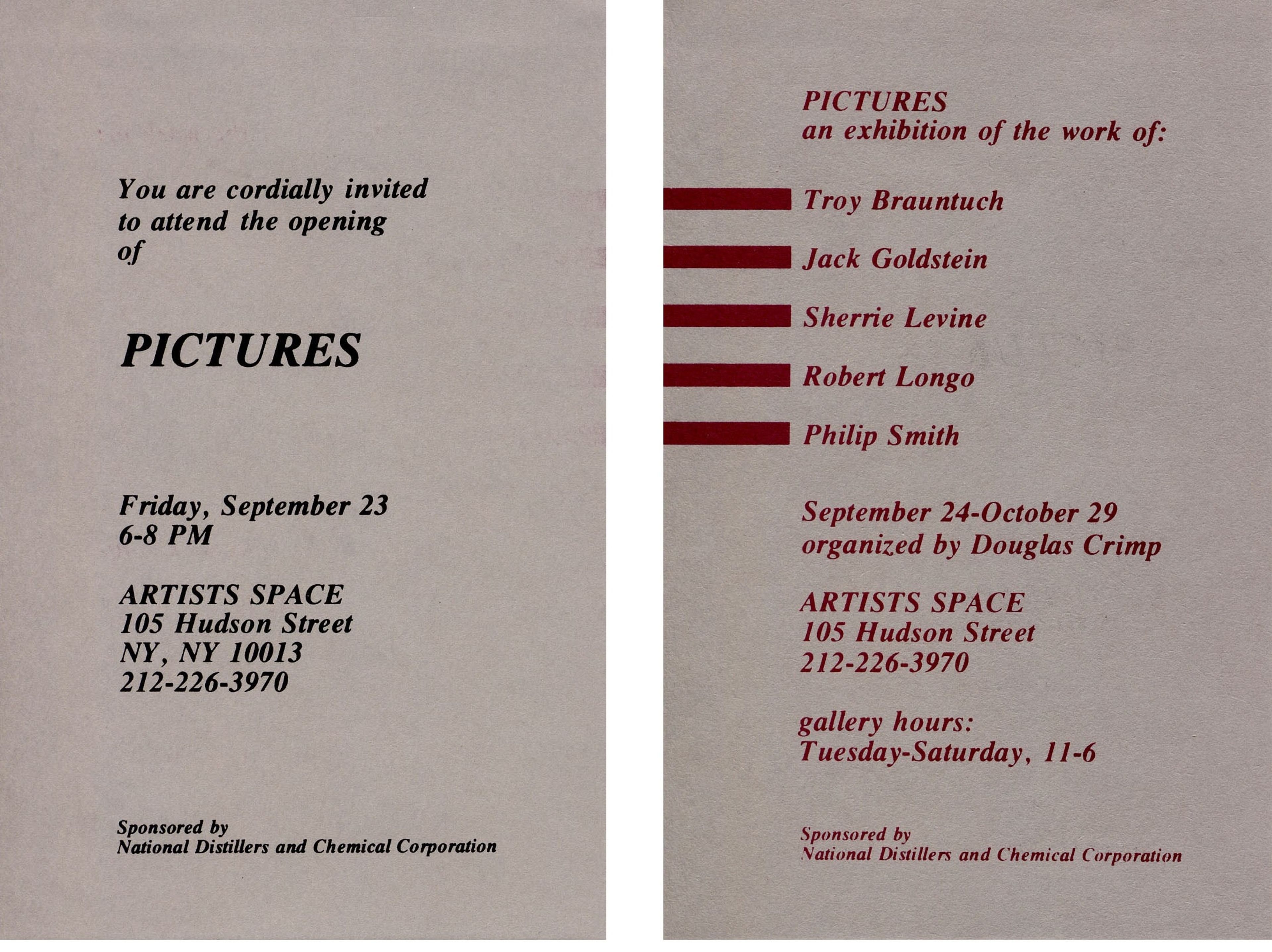Artists Space, New York, United States
1977
"The emotional resonance of The Pictures Generation has accrued over time, strengthened by its curious suitability to the present."—Gary Indiana,The New York Times T Magazine
In September 1977, Artists Space in New York opened a now-historic group exhibition titled Pictures. Curated by the critic Douglas Crimp, the exhibition featured work by Troy Brauntuch, Jack Goldstein, Sherrie Levine, Robert Longo, and Philip Smith. The exhibition has come to define The Pictures Generation—an influential group of artists whose work examines the ways in which images convey meaning.
"To an ever greater extent", Crimp wrote in the catalogue essay, "our experience is governed by pictures, pictures in newspapers and magazines, on television and in the cinema. Next to these pictures firsthand experience begins to retreat, to become more and more trivial. While it once seemed that pictures had the function of interpreting reality, it now seems that they have usurped it. It therefore becomes imperative to understand the picture itself . . . to determine how a picture becomes a signifying structure of its own accord."
Levine's work in the exhibition was the early series Sons and Lovers (1976–77), in which five silhouettes—including the profiles of former US presidents Abraham Lincoln, George Washington, and John F. Kennedy—are rendered on graph paper in fluorescent color and arranged in 35 different configurations. "There are, in all," Crimp writes, "five different 'characters': Washington, Lincoln, and John Kennedy, an unknown woman, and a couple. The president's silhouettes are familiar emblems from the faces of coins, while the bland couple and the 'other woman' are taken from wig advertisements. Each drawing pairs two of these silhouettes facing each other . . . The act of confrontation that is the only psychological relationship fully stated by the images is all that is required to establish a narrative."
Levine again used presidential profiles in the series Presidential Collages (1979). In her acclaimed series After Walker Evans: 1–22 (1981), the artist explicitly challenged notions of originality, authenticity, and identity by taking photographs of reproductions of Evans's photographs documenting the Great Depression of the 1930s.

